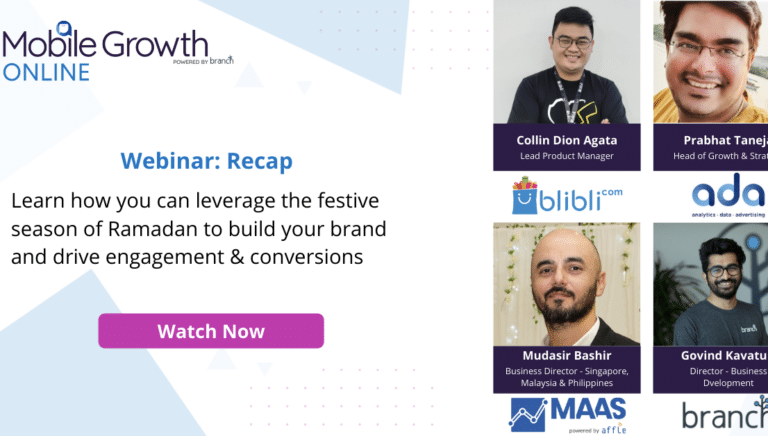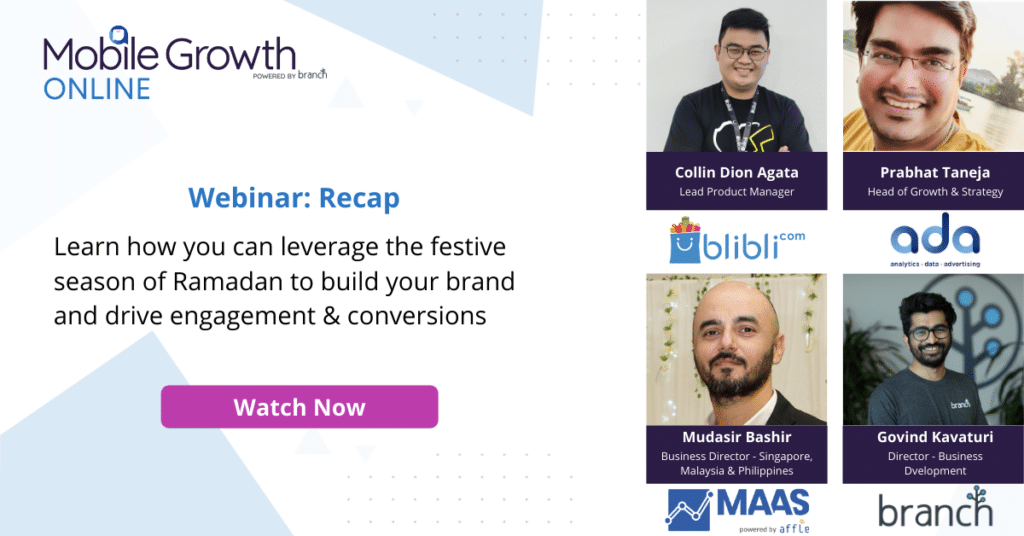Ramadan is a time of great spiritual growth, discipline and introspection in South Asia, where 600 million Muslims – representing a $2.2 trillion dollar market – shift their consumer behavior in ways that mobile marketers and brands would be wise to study.

Why Southeast Asia?
Indonesia and Malaysia alone account for about 252 million Muslims who will be observing Ramadan and Eid-al-Fitr this year. To help track their daily Ramadan practices, more and more Muslims in Southeast Asia are turning to apps, such as Muslim Pro. This app in particular has attracted over 2 million daily active users and seen over 45 million downloads, which should act as inspiration for other brands to capitalize on this opportunity.
Brands fail to connect with their target audience because the changes in consumer behavior and attitudes during Ramadan have not been well documented or studied, until now. Organic install activity in shopping apps starts rising a month before Ramadan and peaks at a growth rate of 40% in the 2 weeks leading up to Ramadan. Moreover, during the first week of Ramadan, organic app installs were seen to grow by 30%. In-app spend also steadily rises with this app install growth.
When creating campaigns to drive users to your app during Ramadan, getting your brand name out there can be a challenge. Below, we break down consumer behavior during Ramadan to help drive your app growth goals.
3 Tips to Demystify Ramadan Consumer Behavior in 2021
Branch and its partner, MAAS (by Affle), recently hosted a Ramadan-themed webinar with panelists from ADA and BliBli to break down the app trends and Ramadan consumer insights that are worth noting in 2021 to design lucrative mobile marketing campaigns for the ages.
Here are 3 critical learnings and takeaways from the webinar:
1. Different Audience ‘Personas’ Have Emerged in 2021 Due to The Pandemic
A number of different target audience ‘personas’ have emerged during the pandemic that should help shape mobile marketing strategies for 2021. Among these are the ‘adaptive shopper’ and the ‘market observer’, to name a few.
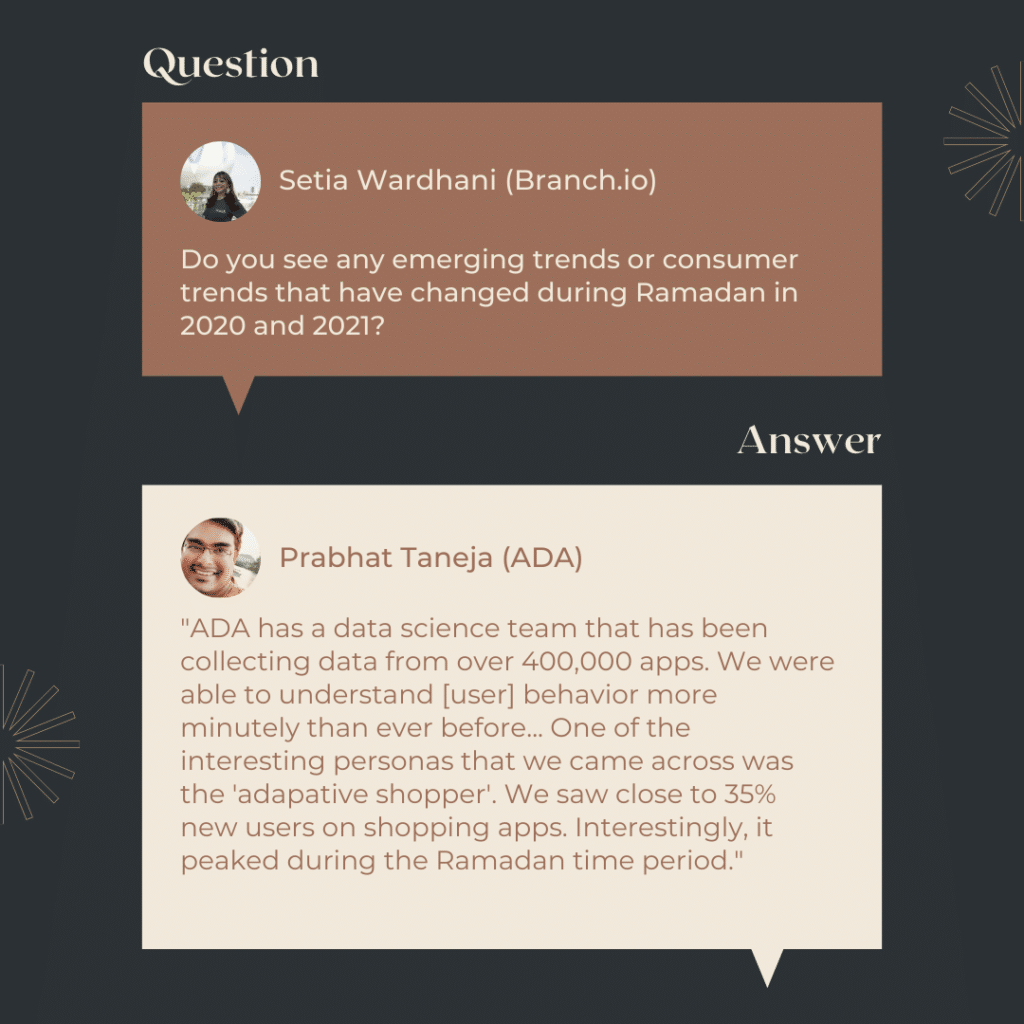
The ‘adaptive shopper’ never would have resorted to e-commerce channels prior to the pandemic, but this persona has now started using online channels and platforms to make purchases. This has resulted in a 35% increase in new users on shoppings apps compared to prior years, whether that be for groceries, lifestyle products, or big ticket items. This means that you can design marketing campaigns keeping the psychological needs and consumer behavior of this ‘persona’ in mind to really maximize your returns.
2. Campaigns with Emotional Triggers Are Very Effective for Brand Building
Creating emotional attachment through your marketing campaigns can be the differentiating factor for your brand. Knowing when to promote your products vs. creating marketing campaigns to solely start conversations around your brand and what it stands for is key for mobile marketers.
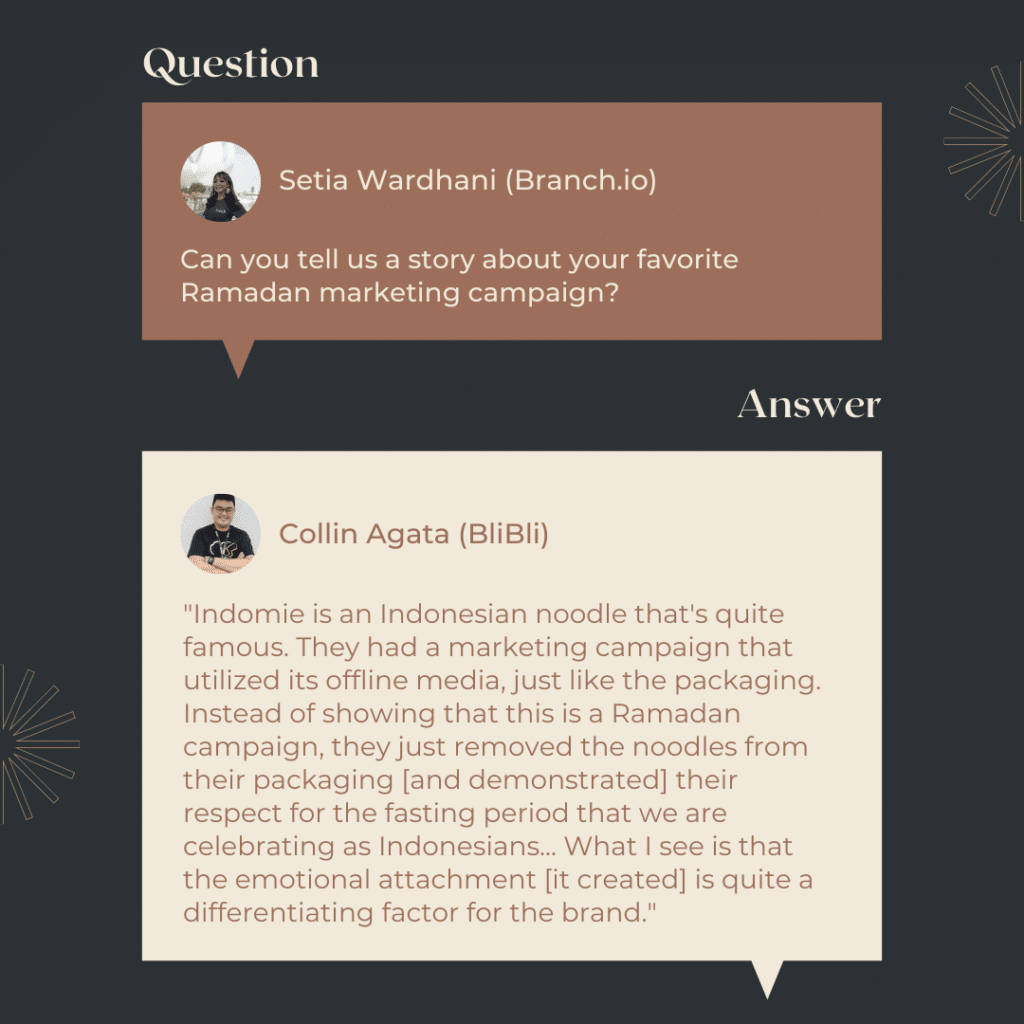
IndoMie had the right idea when it decided to remove all food from its packaging during Ramadan to help Muslims who were fasting during this period to stay on track and not indulge in cravings. By respecting the holy month of Ramadan as a sacred time, it won over more hearts and only solidified its fanbase.
Brands can learn from this strategic move by understanding that not all mobile marketing campaigns have to be centred around promoting your product. In fact, if you spend more of your marketing budget on promoting some core values of Islam like prayer, charity and self-discipline – your spend will go a lot further in changing your brand’s perception in the market – which will only result in more organic app installs and transactional conversions long-term.
[sc name=”blog-ad_featured-whitepaper”]
3. A Creative Refresh Is Needed After The First 2 Weeks of Ramadan
Remember that your brand’s marketing campaign has to run for all 5 weeks. You will need a creative refresh after the first 2 weeks, otherwise you will experience “creative fatigue” and your campaigns will fail to bring in the returns you were hoping for.
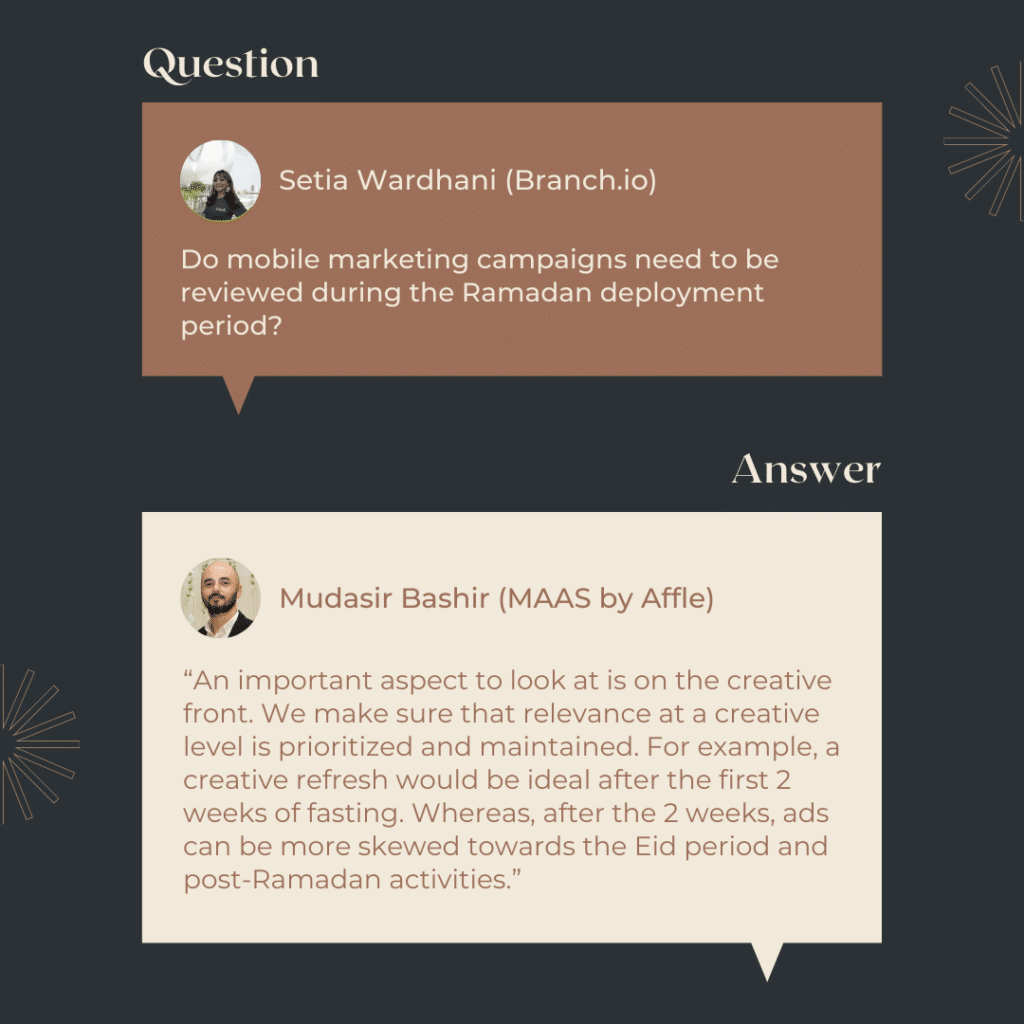
Since most consumer purchases occur 2 weeks before Ramadan, during Ramadan, and throughout the post-Ramadan period – it would be prudent to target ads and mobile marketing campaigns for those periods exclusively.
Ensure that you keep the mood of these 3 different periods in mind when creating your campaigns so that you don’t come across as tone-deaf and turn off your potential users because you did not refresh your creatives appropriately. In-app spend will peak during these periods as well – particularly when employees get their bonuses at the end of the fasting month – meaning that gift-buying and the intent to purchase is always at an all-time high then.
For more in-depth insights into Ramadan consumer behavior and a breakdown of more emerging target audience ‘personas’ in 2021, watch the entire session now!






















